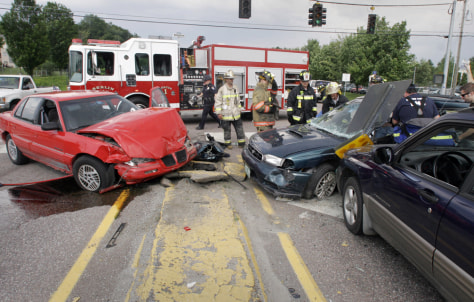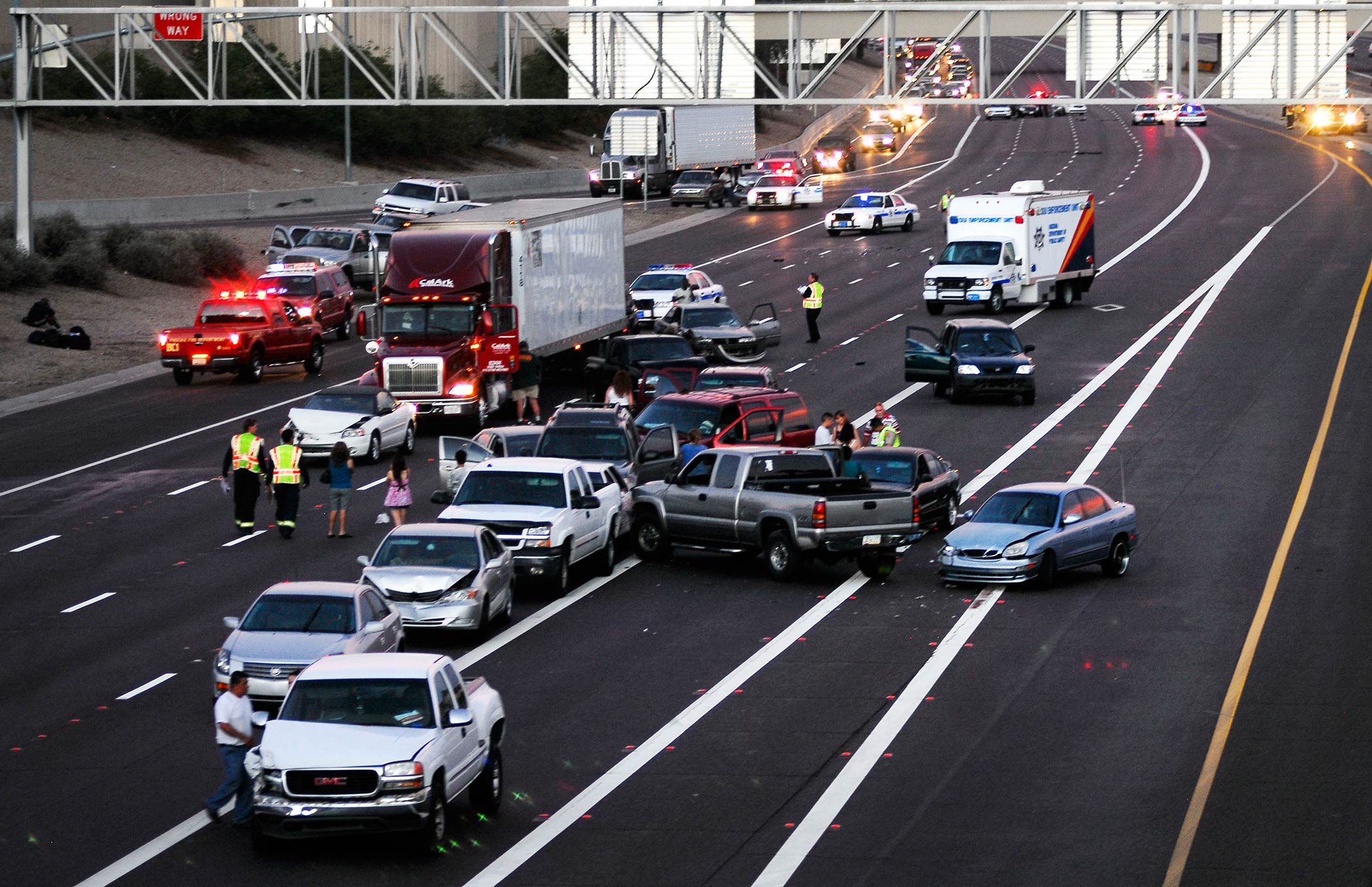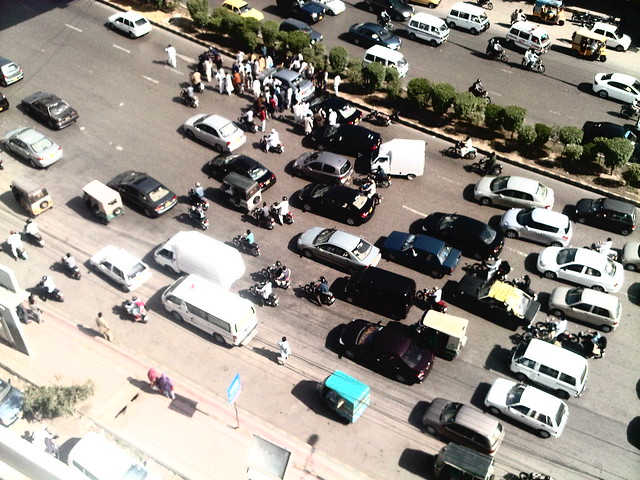Source:- Google.com.pk
Traffic accidents accidents, often involving a lone employee traveling in unfamiliar territory for work or a group traveling to an event, typically involve nonprofessional drivers who have received no on-the-job training in defensive driving tactics, experts say.
“While companies have become very good at most aspects of enterprise risk management, travel risk management is often overlooked,” said Kevin Wilkes, Pittsburgh-based senior vice president and security practice leader at Willis North America Inc. “It remains a large vulnerability for many organizations.”
Del Lisk, San Diego-based vice president of safety services at telematics firm Lytx Inc., said a popular misconception is that driving risks are greater for a long-haul truck driver than a salesman driving a midsize sedan in unfamiliar territory.
“Nonprofessional drivers, such as managers and salespeople, often present a bigger safety issue because they have had less training,” Mr. Lisk said.
Rich Bleser, Milwaukee-based senior vice president and fleet safety specialty practice leader of workforce strategies practice at Marsh Risk Consulting, agreed that all workers comp managers need to address the issue, noting that vehicle collisions are the leading cause of workplace fatalities in the U.S.
“We need to focus on light vehicle fleets because a commercial fleet operator looks at himself as a professional driver; it's a core competency, but a salesperson is best at selling products,” Mr. Bleser said. “Another problem we have is that salespeople live on their cellphones, so distracted driving has become a huge issue.”
Debbie Michel, Chicago-based president of third-party claims administrator Helmsman Management Services L.L.C., said the top diagnosis among workers on the job involved in car crashes is neck injuries, which tend to have higher severity as well as a higher chance of attorney involvement.
“The research we have done has revealed that traffic accidents are one of the leading causes of high severity workers comp injuries,” Ms. Michel said. “The other thing to bear in mind with motor vehicle accidents that involve employees is that they are more likely to involve multiple claims because several employees are often riding together in a car.”
To minimize catastrophic driver-related workers comp claims, Mr. Bleser said every organization should build a robust fleet management safety program that emphasizes training and specifies polices regarding everything from the type of vehicles employees are allowed to use to seatbelt usage to distracted driving.
“You should have a strong defensive driver program, regardless of what type of vehicles your employees are operating,” he said. “You need to teach employees how to eliminate distractions before a vehicle is put in motion.”
Mr. Lisk said telematic and mobile video recording technologies once used only by commercial trucking fleets can help risk managers better track employees on the road and train them if unsafe behaviors are observed.
“These technologies are sliding down the food chain from large trucks and professional drivers down to nonprofessional drivers,” Mr. Lisk said. “You need tools to make sure that what's being taught is actually being used by drivers on the road.”
Ron Skrocki, Philadelphia-based vice president of product management development workers comp case manager Genex Services Inc., said telematic system data can be merged with workers comp claims and medical data to form predictive models.
“One of the causes of catastrophic claims is people falling asleep behind the wheel,” he said. “Using the data, we were able to work backwards and see that in many cases, the driver had undiagnosed sleep apnea. It then became a wellness issue.”
Insurance is another way to mitigate driver-related risks.
Dominick Zenzola, Chicago-based vice president and employee group benefits manager of accident and health at Chubb & Son, said dedicated business travel policies can supplement other insurance coverage.
Traffic accidents can be classified by general type. Types of collision include head-on, road departure, rear-end, side collisions, and rollovers.
Many different terms are commonly used to describe vehicle collisions. The World Health Organization use the term road traffic injury, while the U.S. Census Bureau uses the term motor vehicle accidents (MVA), and Transport Canada uses the term "motor vehicle traffic collision" (MVTC). Other terms that are commonly used include auto accident, car accident, car crash, car smash, car wreck, motor vehicle collision (MVC), personal injury collision (PIC), road accident, road traffic accident (RTA), road traffic collision (RTC), road traffic incident (RTI), road traffic accident and later road traffic collision, as well as more unofficial terms including smash-up, pile-up, and fender bender.
Some organizations have begun to avoid the term "accident". Although auto collisions are rare in terms of the number of vehicles on the road and the distance they travel, addressing the contributing factors can reduce their likelihood. For example, proper signage can decrease driver error and thereby reduce crash frequency by a third or more. That is why these organizations prefer the term "collision" rather than "accident".
However, treating collisions as anything other than "accidents" has been criticized for holding back safety improvements, because a culture of blame may discourage the involved parties from fully disclosing the facts, and thus frustrate attempts to address the real root causes.
In a significant number of non-fatal accidents, trauma - notable psychological trauma, or long lasting injury issues can be significant[
A 1985 study by K. Rumar, using British and American crash reports as data, found that 57% of crashes were due solely to driver factors, 27% to combined roadway and driver factors, 6% to combined vehicle and driver factors, 3% solely to roadway factors, 3% to combined roadway, driver, and vehicle factors, 2% solely to vehicle factors, and 1% to combined roadway and vehicle factors.
Human factors in vehicle collisions include all factors related to drivers and other road users that may contribute to a collision. Examples include driver behavior, visual and auditory acuity, decision-making ability, and reaction speed.
A 1985 report based on British and American crash data found driver error, intoxication and other human factors contribute wholly or partly to about 93% of crashes.
An RAC survey of British drivers found that most thought they were better than average drivers; a contradictory result showing overconfidence in their abilities. Nearly all drivers who had been in a crash did not believe themselves to be at fault. One survey of drivers reported that they thought the key elements of good driving were:
controlling a car including a good awareness of the car's size and capabilities
reading and reacting to road conditions, weather, road signs and the environment
alertness, reading and anticipating the behavior of other drivers.
Although proficiency in these skills is taught and tested as part of the driving exam, a 'good' driver can still be at a high risk of crashing because:
...the feeling of being confident in more and more challenging situations is experienced as evidence of driving ability, and that 'proven' ability reinforces the feelings of confidence. Confidence feeds itself and grows unchecked until something happens – a near-miss or an accident.
An AXA survey concluded Irish drivers are very safety-conscious relative to other European drivers. However, this does not translate to significantly lower crash rates in Ireland.
Accompanying changes to road designs have been wide-scale adoptions of rules of the road alongside law enforcement policies that included drink-driving laws, setting of speed limits, and speed enforcement systems such as speed cameras. Some countries' driving tests have been expanded to test a new driver's behavior during emergencies, and their hazard perception.
There are demographic differences in crash rates. For example, although young people tend to have good reaction times, disproportionately more young male drivers feature in accidents, with researchers observing that many exhibit behaviors and attitudes to risk that can place them in more hazardous situations than other road users. This is reflected by actuaries when they set insurance rates for different age groups, partly based on their age, sex, and choice of vehicle. Older drivers with slower reactions might be expected to be involved in more accidents, but this has not been the case as they tend to drive less and, apparently, more cautiously. Attempts to impose traffic policies can be complicated by local circumstances and driver behavior. In 1969 Leeming warned that there is a balance to be struck when "improving" the safety of a road:
Conversely, a location that does not look dangerous may have a high crash frequency. This is, in part, because if drivers perceive a location as hazardous, they take more care. Accidents may be more likely to happen when hazardous road or traffic conditions are not obvious at a glance, or where the conditions are too complicated for the limited human machine to perceive and react in the time and distance available. (This fact can be used to improve safety, by putting up signs in accident-prone locations, like ones stated above.)
This phenomenon has been observed in risk compensation research, where the predicted reductions in accident rates have not occurred after legislative or technical changes. One study observed that the introduction of improved brakes resulted in more aggressive driving, and another argued that compulsory seat belt laws have not been accompanied by a clearly attributed fall in overall fatalities.
In the 1990s, Hans Monderman's studies of driver behavior led him to the realization that signs and regulations had an adverse effect on a driver's ability to interact safely with other road users. Monderman developed shared space principles, rooted in the principles of the woonerven of the 1970s. He found that the removal of highway clutter, while allowing drivers and other road users to mingle with equal priority, could help drivers recognize environmental clues. They relied on their cognitive skills alone, reducing traffic speeds radically and resulting in lower levels of road casualties and lower levels of congestion.
Some crashes are intended; staged crashes, for example, involve at least one party who hopes to crash a vehicle in order to submit lucrative claims to an insurance company. In the USA in the 1990s, criminals recruited Latin immigrants to deliberately crash cars, usually by cutting in front of another car and slamming on the brakes. It was an illegal and risky job, and they were typically paid only $100. Jose Luis Lopez Perez, a staged crash driver, died after one such maneuver, leading to an investigation that uncovered the increasing frequency of this type of crash.
Traffic Accident Accident Photos Man Pictures of Honey Singh Graphic Image Clipart of Gopinath Munde Car Prone Photos
Traffic Accident Accident Photos Man Pictures of Honey Singh Graphic Image Clipart of Gopinath Munde Car Prone Photos
Traffic Accident Accident Photos Man Pictures of Honey Singh Graphic Image Clipart of Gopinath Munde Car Prone Photos
Traffic Accident Accident Photos Man Pictures of Honey Singh Graphic Image Clipart of Gopinath Munde Car Prone Photos
Traffic Accident Accident Photos Man Pictures of Honey Singh Graphic Image Clipart of Gopinath Munde Car Prone Photos
Traffic Accident Accident Photos Man Pictures of Honey Singh Graphic Image Clipart of Gopinath Munde Car Prone Photos
Traffic Accident Accident Photos Man Pictures of Honey Singh Graphic Image Clipart of Gopinath Munde Car Prone Photos
Traffic Accident Accident Photos Man Pictures of Honey Singh Graphic Image Clipart of Gopinath Munde Car Prone Photos
Traffic Accident Accident Photos Man Pictures of Honey Singh Graphic Image Clipart of Gopinath Munde Car Prone Photos
Traffic Accident Accident Photos Man Pictures of Honey Singh Graphic Image Clipart of Gopinath Munde Car Prone Photos
Traffic Accident Accident Photos Man Pictures of Honey Singh Graphic Image Clipart of Gopinath Munde Car Prone Photos
Traffic Accident Accident Photos Man Pictures of Honey Singh Graphic Image Clipart of Gopinath Munde Car Prone Photos
Traffic Accident Accident Photos Man Pictures of Honey Singh Graphic Image Clipart of Gopinath Munde Car Prone Photos
Traffic Accident Accident Photos Man Pictures of Honey Singh Graphic Image Clipart of Gopinath Munde Car Prone Photos
Traffic Accident Accident Photos Man Pictures of Honey Singh Graphic Image Clipart of Gopinath Munde Car Prone Photos
Traffic Accident Accident Photos Man Pictures of Honey Singh Graphic Image Clipart of Gopinath Munde Car Prone Photos
Traffic Accident Accident Photos Man Pictures of Honey Singh Graphic Image Clipart of Gopinath Munde Car Prone Photos
















No comments:
Post a Comment